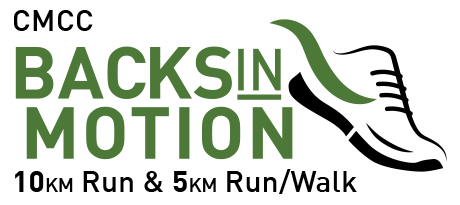IMPORTANT TIPS FOR OUTDOOR WINTER RUNNING
By: Lisa Regan
Outdoor running in the winter brings a whole new list of challenges. Make sure you are prepared for anything mother nature brings your way. Some important things to take into consideration are the lack of light, slippery conditions and temperature. Some things that help combat these issues are making sure you are wearing weather appropriate materials and layers. This includes snow gear, always wearing reflective items and a bright light of some sort, remembering to hydrate in the winter just as you would in the summer, trying to stick to main routes that have been plowed and salted, staying alert and keeping the volume down on music or not using ear phones and most importantly always running with someone else and telling someone your route when you leave.
1. WINTER RUNNING CLOTHING AND LAYERS – Luckily for us running gear has come along way and there are tonnes of products out there that do an excellent job and keeping you warm and dry through some of the worst winter days. Here are some important items to include in your gear drawer (or 2 chests of drawers if you own the same amount of gear as me!!!!).
BELACLAVA, HAT, EAR WARMERS – We lose most of our heat from our heads, therefore it is very important to make sure you invest in a good quality hat or ear warmers. On really cold days you might also need to cover your whole face with something like a belaclava. A belaclava is good to protect your skin and face from the elements. On milder days you might only need a head band to cover your ears.
CHAPSTICK/VASOLINE – A protective layer of vasoline or chapstick on your lips and face can also help to decrease the affect of windburn in the winter.
LAYERING – With winter running clothing you want to wear layers for a few reasons. The layers help to trap heat in, but also help to wick moisture from the inner to the outter layer where it is evaporated. Wicking moisture to the outter layer essentially keeps you warmer and dryer.
INNER LAYER/WICKING LAYER – The layer closest to your skin should be a synthetic wicking fabric. This will hlep to wick moisture away and kep you warm and dry. The BIGGEST mistake is to wear cotton as this layer. Cotton will absorb moisture and sweat which will make you cold.
INSULATING LAYER – On really cold days (-20 and under for me personally) you need to add an insulating layer. This is usually a microfleece. Something that adds an extra layer of warmth but should still be a layer that wicks moisture to the surface. You want to have some air exchange through this layer to all some heat out, however keep the majority in. Light weight microfleece tops are my choice here.
WIND BREAKING LAYER – Your most outter layer should protect you against wind and moisture (sleet, hail, snow, rain) but also allow some heat and moisture to esacpe. Jackets with zippers are good to help you regulate heat, also jackets that are easy to fold up and tie around your waist if you get warm are great. Some jackets also come with zippers under the arms which allow a vent for heat to escape if you get too warm. This layer should also have some reflective material to help with running safely when its dark out. Jackets with a back pocket are also great because you can put extra gear there in case you need it or when you get warm ie. mitts, gloves, hats.
GLOVES/MITTS – We lose a lot of our heat from out feet and hands. Make sure to use a good pair of moisture wicking gloves. There are thin ones that are great for not too cold days and on colder days get a thicker pair of wicking gloves or mittens. Mitts are great because your fingers share heat and warm each other up. Mzke sure your mitts are also a wicking material so that moisture is not sitting inside the mitt next to your skin.
RUNNING PANTS – Tights or running pants with reflecgtive strips that are made of a good wicking material are usually enough in the winter. On really cold days you might have to add a base layer of wicking type long john underneath as well. Our legs dont tend to lose as much heat as our upper body does so you wont need as many layers on your legs as your torso and arms.
RUNNING SHOES/SHOE COVERS – There are products you can buy and put on your shoes to add grip, and also covers you can buy to put over your shoe to prevent snow and slush from getting inside. I tend to wear my normal running shoes all winter and try to avoid stepping in puddles and slush and getting my feet wet. If you live in wetter areas ie; Vancouver, you might want to consider puchasing a trail running shoe in the winter. When I lived in Vancouver, BC due to the extreme moisutre and cold rain in the winter I switched to a North Face trail running shoe made of gortex. They were great because they kept my feel warm and dry. The only down side was that the gortex is very good at keeping moisture out and as such keeps all the heat in. I found my feet would over heat and I could only use them on really cold days.
SOCKS – NEVER wear cotton socks. Socks should be made of a wicking material so your feet stay warm and dry. Wet feet are more likely to decrease your total body temperature and will increase the likelyhood of blisters.
2. REFLECTIVE ITEMS – Always assume cars dont see you and be alert! Wearing something reflective; as well as a light attached to your clothing at night or on darker days will help the chances motorist will notice you. Most running clothing has reflective strips on it and you can also purchase lots of winter running gear in bright colours like flourescent yellow and orange. There are lots of great lights you can buy to attach to clothing that are white, red, flashing etc. Make yourself AS VISIBLE AS POSSIBLE when you are on the roads in the winter.
3. HYDRATION – It is eay to forget about hydration in the winter. Make sure to take fluids with you on long runs and to stay hydrated just as you wuold in the summer. On really cold days you might find your water bottles freeze. You can start the run with warmer water to help prevent or delay your water bottles from turning to popsicles.
4. MAIN ROUTES AND PLOWED/SALTED ROADS – Especially after a snow fall or ice make sure to stay to main routes. These are the streets and sidewalks that are most likely to be plowed and salted first. Point out icey patches to runners behind you as you pass them to give them a heads up.
5. STAY ALERT AND RUN WITH A BUDDY – Always run with someone else, especially at night when its dark and especially in the winter. Make sure to have a cell phone on you for emergencies and always tell someone before you go out what route you are taking and roughly how long you will be.
Winter running is all about being SAFE and PREPARED!!!! Make sure you have the right GEAR, are VISIBLE and ALERT!!!!
visit running free for all your winter running needs!! – Running Free – http://runningfree.com/
As always remember to increase your training gradually, listen to your body and if you are experiencing pain have it checked out by a professional!!
Have a GREAT and SAFE winter on the roads!!!!
If you have any QUESTIONS or would like more INFORMATION feel free to email me lisa_regan12@hotmail.com
Lisa Regan MScPT, CAT(C), ART
Registered Physiotherapist
Certified Athletic Therapist
Contemporary Medical Acupuncture
Active Release Techniques (ART)




















